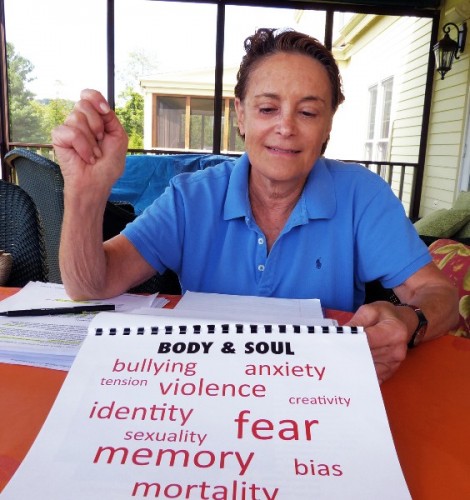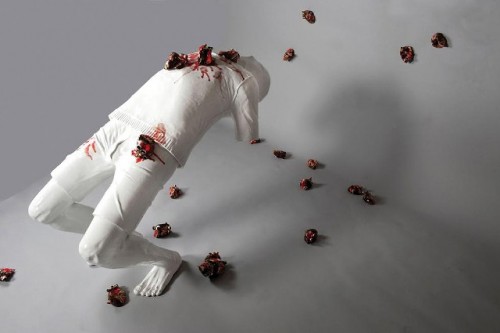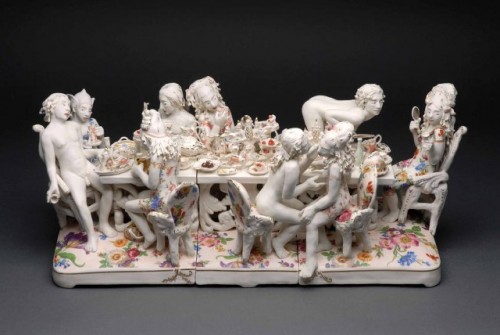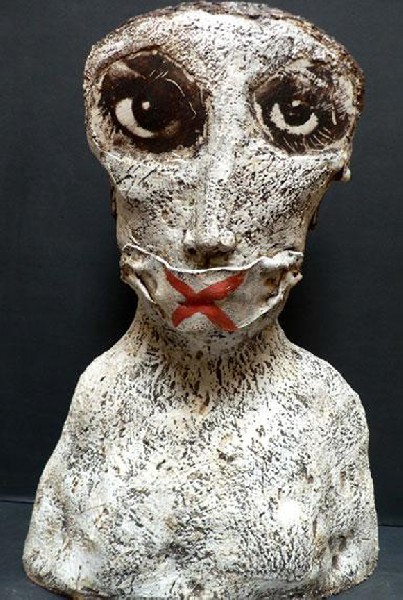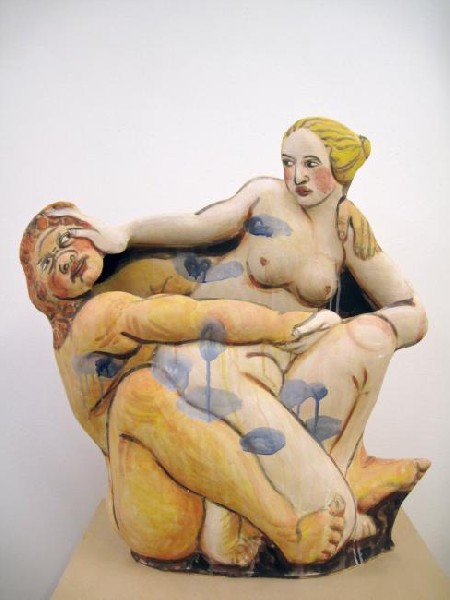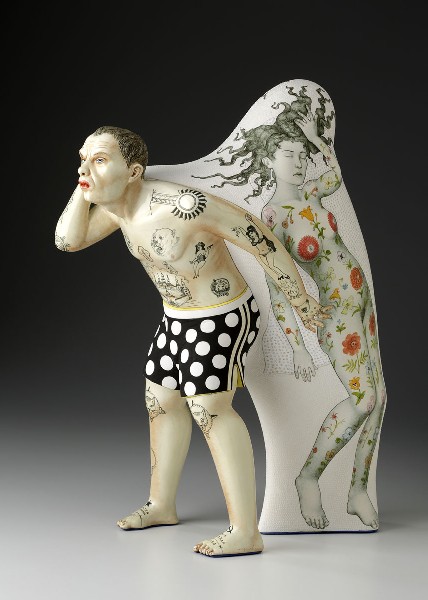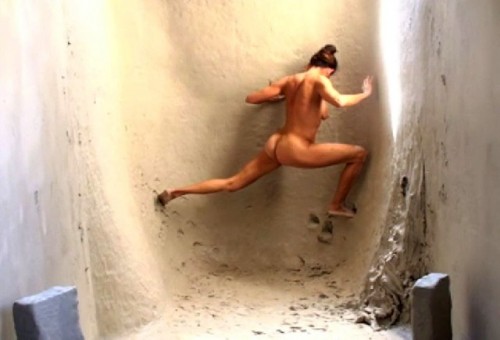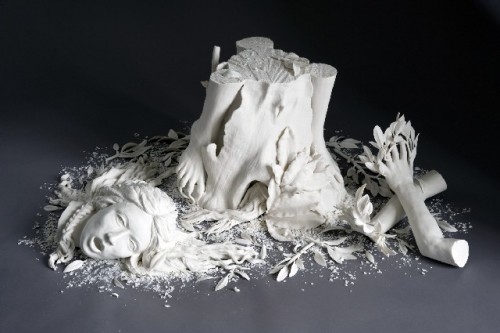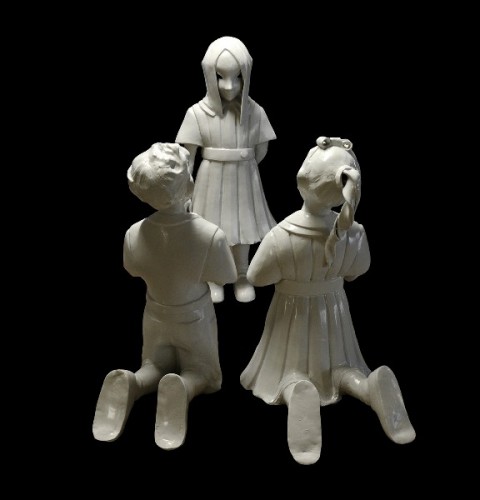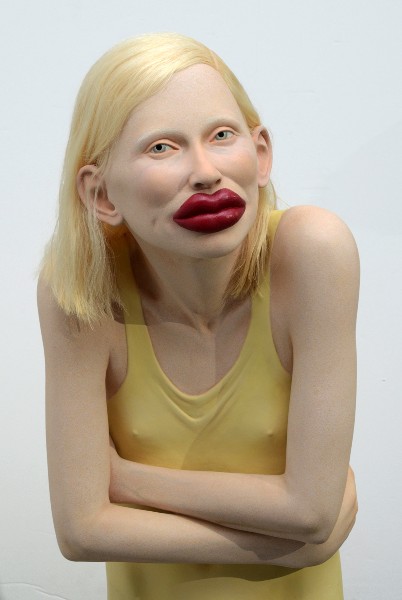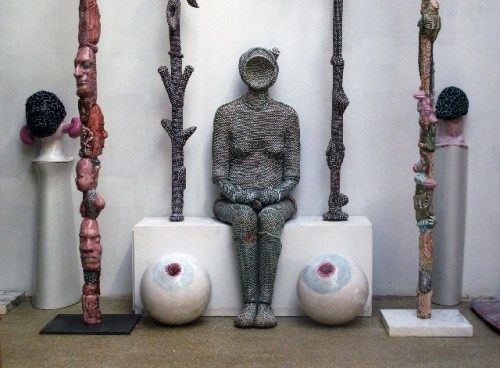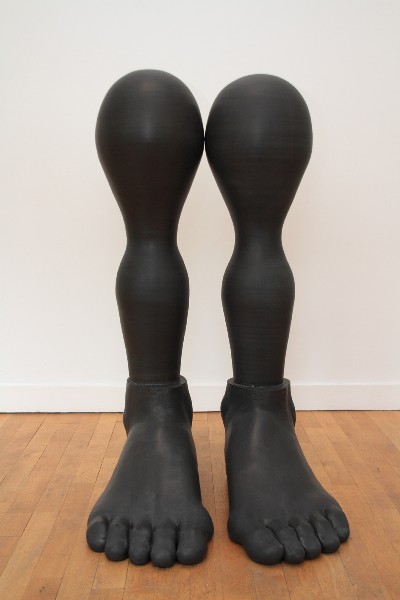Body & Soul at Museum of Arts and Design
A Dialogue with Curator Wendy Tarlow Kaplan
By: Charles Giuliano - Sep 07, 2013
Body & Soul
New International Ceramics
Museum of Arts and Design, New York
Curator: Wendy Tarlow Kaplan, co curators,Martin S. Kaplan, Laurent de Verneuil
Museum of Arts and Design
2 Columbus Circle
New York, New York 10019
September 17, 2013–March 2, 2014
For a number of years Wendy Tarlow Kaplan and I were colleagues as contributors to Art New England. We have reconnected as Berkshire residents. She divides time with her husband, Martin S. Kaplan, between residences in Lenox and New York City.
They have traveled extensively in France to research and organize, with Laurent de Verneuil, the exhibition Body & Soul: New International Ceramics which opens on September 17 at the Museum of Arts and Design in New York City.
Recently I met with her to discuss the ambitious museum project. Martin was not available during the meeting.
Charles Giuliano Let’s start with an overview of Body & Soul: New International Ceramics.
Wendy Tarlow Kaplan We are presenting a group of 24 artists half of whom are French. Often they have come to ceramics from other fields, from painting and drawing to sculpture. Together they represent the voices of artists looking at a range of contemporary problems in a manner that will engage viewers with lots of questions provoking discussion and new ideas.
CG How did you both become involved with the project? What was Martin's role?
WTK Boston friends , Karen and Michael Rotenberg, who are passionate collectors of French ceramics, introduced us to one artist in particular Daphne Corregan, who teaches in Monaco. She was born in Pittsburgh but has spent most of her life in France.
We met eight or nine artists who lived in very scenic areas high up on cliffs or in valleys. The aspect of landscape was very important to their work.
Then we went to Paris coinciding with a major art happening for ceramics. It was the 44th anniversary of The L'Academie Internationale de la Ceramique (AIC). On that occasion forty galleries in and around Paris were presenting works by contemporary French and international ceramic artists. In addition to Musée des Arts Décoratifs (Museum of Decorative Arts) and Sèvres National Ceramics Museum.
CG The famous porcelain factory at Sèvres was founded by Madame de Pompadour.
WTK Correct and many of the ceramic artists had been hosted there. We looked at artists who had workshops or residencies there over the years. Each time we went into a gallery we would be surprised by the work of the French artists.
That led to the idea of doing an exhibition that would perhaps be the legacy of Picasso in ceramics. We brought that idea to Malcolm Rogers at the Museum of Fine Arts and others. They were not convinced that there was a new story here.
Then we went back and looked at the photographs we had collected from the artists. We thought how can we make an exhibition which is meaningful to an audience, say something, and be a fresh approach.
We came up with the idea of figurative ceramics that have a message. They deal with issues of identity, sexuality, bullying, abuse, violence, rebellion and despair. Through that lens we selected artists. We had to give up on our idea of working with artists doing landscapes and non figurative work. The ceramics were gorgeous but didn’t fit into this theme. We put together a group who have a voice in each of these categories.
It’s not a pretty show. It’s a dramatic and powerful show.
One of the artists, an African American, Sana Musasama, who teaches at Hunter College in New York, has included a series of works about young girls being circumcised in Africa.
The range of discussions that are available are rather broad. It is our hope to engage a young audience in these important discussions. There are issues of bigotry and bias. We were thinking about the shootings in schools and why young people are doing such awful things.
There is an artist from Finland, Kim Simonsson, who had created a tableau of two children kneeling and pleading with their arms behind their backs. The third standing opposite to them is holding a gun. It’s unexpected to see that in children, but, sadly, we have become aware of that in recent years.
The work is individual and none of the artists are concentrating on glazes, or shapes, or forms that related to an exhibition I did earlier in 2002, also at the Museum of Arts and Design, which was on the theme of Danish ceramics. It was called From the Kilns of Demark Contemporary Ceramics. That included 30 artists based on the traditional vessel form. Glazes were still informed but mostly relating to the essence of the vessel form.
So this is entirely new for us.
One aspect of being in France for six trips was connecting with a gallery director Laurent de Verneuil (a co-curator of the exhibition) who was invited by Bernardaud, a major company, to do an exhibition. They have a home base on one of the beautiful streets of Paris. He was invited to curate a show in Limoges. That’s where the company has their factory mostly producing porcelain. It’s connected to a museum which keeps early ceramics intact.
CG I would like to get back to some of the dynamics of how you and Martin operated. Was there an ongoing discussion of the work? Did he focus on logistics?
WTK A little of both.
CG Were there debates?
WTK There were times when I felt strongly about an artist and times when he felt strongly about an artist. Mostly we compromised. If we chose specific pieces we both had to justify our decisions. He has a very good eye and an astute sense of what the public might like. He is also an eclectic collector. His father was an artist who made furniture and upholstery as well as small sculptures. They had African as well as Picasso’s influences. So he came to this with some genetic training. He said this would be a wonderful project for us to do together because he now has more time to travel and engage in art.
CG We have known each other for some time particularly as long standing contributors to Art New England. So I am familiar with your curatorial background. Could you tell us how you became focused on clay as a medium?
WTK I found it to be more accessible. It’s less costly than paintings and drawings although we will have one each in the show. There will also be one large scale photograph. With the interest of Garth Clark, in addition to some of the very fine scholars in the field of ceramics, he in particular has promoted the accessibility of ceramics. He has a gallery in New York. With his partner Mark Del Vecchio they exhibited a high end, eclectic group of international artists; from Anthony Caro to Anna Beth Rosen from California. The Danish exhibition traveled to five American museums then Paris and Berlin before it went back to Denmark. Through that project I was introduced to many of the ceramics instructors particularly in California, including through the exhibition's installations at the Mingei International Museum in San Diego and the Sacramento Art Museum.
CG What background did you have that led to a career as a curator?
WTK I trained in the print department of the Museum of Fine Arts Boston. There was no ceramics department but it was a brilliant and exciting place to be.
CG Were you there during the time of curator Eleanor Sayre?
WTK Yes. She was the museum’s first female curator. While I was in the print department I completed a master’s degree with Boston University. As an undergraduate I attended Smith College. For Radcliffe I worked on the exhibition of what Radcliff alumnae collect. There were several ceramic pieces in that show. Then I was the first full time curator for five years at the Art Complex Museum in Duxbury (Mass.). There was a splendid collection of Japanese ceramics. It was assembled by Carl Weyerhauser, father of the current director, Charles Weyerhauser and Sam Morse.
CG Of course Morse was the great collector of Japanese ceramics for the MFA. (Edward Sylvester Morse, from Salem, Massachusetts, was a zoologist who lived in Japan in the 1870s.) Is that the ceramics connection?
WTK I don't know.
CG Did you know of the Morse collection when you were at the MFA?
WTK I did know of it. Joan Cohen was working with that collection. The Art Complex Museum collected many examples of contemporary ceramics.
CG Because of my training and focus in the fine arts I have had little exposure or interest in the decorative arts or ceramics. But this show seems very different and enticing. Perhaps it will evoke interest in a new audience of museum visitors. It seems to defy expectations and received notions of the field. How does that conflate with the mandate of the museum? We visited for the first time last year when Astrid wanted to experience; smell actually, The Art of Scent, 1889 – 2012, which she reviewed. The museum was not at all what we anticipated and we look forward to seeing this new exhibition.
What is the mandate of the museum and how are they embracing this show?
WTK Very much so they are great supporters of the project. Our advisor is David McFadden the chief curator. His good advice throughout has been a help and inspiration.
CG Will the show travel?
WTK It could have traveled. We had a major venue but not immediately after the show closes in New York. It was going to be too costly to put everything in storage.
CG How did ceramic art, which we associate with crafts, become a medium for social commentary?
WTK Because clay is such a basic form. From earliest times clay has been used to represent figurative elements. Even in the context of Play Dough for children they’re building things. It’s a very accessible medium. In the schools, particularly in Paris, they are using clay as a way to expand the repertoire of expression. Daphne Corregan from our show teaches in Monaco. She told us that she is excited with what her students are doing. So there is an interest in expanding the importance of what one can do in clay.
CG What programming is being built around the exhibition?
WTK There will be three public conversations. During the openings on September 24, 25 and 26 any of the artists who are in New York will participate in the conversations. There will be later presentations about how one responds to works in the exhibition. The audience will be asked to participate. Some of the artists who can’t come for the opening are coming later during the exhibition. We will build programming around their work.
CG During visits to New York there are so many museum options. Compared to the Met, MoMA, and Whitney I am less inclined to commit a half a day to the Museum of Arts and Design. What is it doing to overcome the prejudices against a craft museum and efforts to put it more on the level of other museums?
WTK They hope they’ve overcome the language aspect because the name has been changed from American Craft Museum to Museum of Arts and Design. That’s the initial effort. Contrary to the Fuller Craft Museum (Brockton, Mass.) which I’m very partial to and have done exhibitions there, including curating its Triennial (when it was formerly the Fuller Museum of Art). They have taken up craft in the name of the museum, but in a positive way.
We found that many of the French artists did not want their work to go to a museum that was about crafts. Unfortunately, it has the connotation of being less important. The maker may not be trained in an educational environment. That, for the artists, was a big criterion.
It’s a bias which is not well founded. It’s just one of those unfortunate situations.
CG Do you and Martin collect ceramics?
WTK We do and we’ve been fortunate to acquire small works which we love. I bought the piece which is on the cover of the catalogue of the Danish exhibition.
I don’t know if our exhibition is unique.
CG What kind of networking is evolving from this project? Did the artists know each other and was there a dialogue among them? Is this a catalyst for that interaction?
WTK When you are putting together a group show the norm is not to inform the artists of the other participants. When we selected the final list of artists they got to know who the other artists were. It’s museum policy. That was true also when we did the Danish show. There were about 20 artists whom we couldn’t include in the show.
CG What next?
WTK I’m not sure. We will have to see how this goes. The public is yearning for these kinds of discussions. Can we make the dialogue meaningful?
CG It seems important that you get media coverage beyond specialized craft and ceramics publications. How do you get the dialogue into the mainstream?
WTK The Met now has significant ceramics additions to their permanent collections. Some were donations but some they purchased. The current Ken Price exhibition which came from LACMA (Los Angeles Country Museum of Art) is a stunning show on view through September 22. They have had two other major exhibitions of contemporary work. A lot of that was urged by Linda Schlenger who is head of Friends of Contemporary Ceramics. They give support for hosting exhibitions and underwriting part of the cost for the catalogues. But more is needed.
CG We will look forward to seeing the exhibition.

